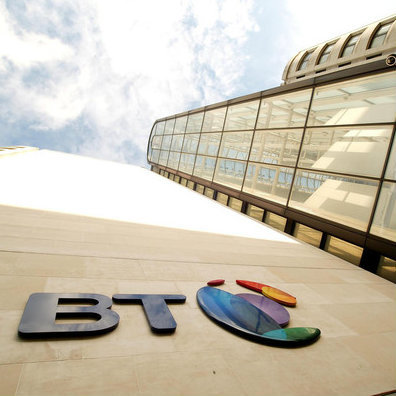BT Looks Beyond G.fast With PON Trials
UK fixed-line operator claims PON breakthrough and hints at future rollout plans.

LONDON -- Broadband World Forum 2016 -- BT has given a strong signal that its ultrafast broadband ambitions go far beyond G.fast and a relatively limited deployment of fiber-to-the-premises technology.
The UK fixed-line operator today claimed to have made a breakthrough on the development of fiber network technologies by carrying out the first European demonstration of several passive optical network (PON) technologies over a single fiber.
Announced during today's Broadband World Forum in London, the trials with Chinese equipment vendor Huawei Technologies Co. Ltd. combined the GPON technology that is already in commercial deployment with XGS-PON and NG-PON2 -- two next-generation standards.
Using a fiber-to-the-premises (FTTP) connection between its Adastral Park research facility and the University of Suffolk, the operator was able to achieve an aggregate connection speed of 52.5 Gbit/s, according to Tim Whitley, BT's managing director of research and innovation.
That included 40 Gbit/s over NG-PON2, 10 Gbit/s on the XGS-PON connection and 2.5 Gbit/s on GPON.
"The significance of the trial is that it shows we can upgrade FTTP to higher speeds without rebuilding or re-architecting," said Clive Selley, BT's CTO, during today's event. "We just need new electronics in exchanges and customer premises."
BT is currently focused on the rollout of G.fast, a copper-fortifying technology that it plans to extend to about 10 million UK premises by 2020. Yet it also aims to cover another 2 million homes and businesses with an FTTP network -- up from about a third of a million today.
While higher-speed PON technologies may deliver more bandwidth than any user currently needs, BT says it is eager to remain at the forefront of innovation so that it can introduce new technologies as and when they are required. "A future 40Gbit/s solution makes symmetric multi-gigabit services an option in future as demand emerges," said Selley.
The rollout of Gigabit broadband access networks is spreading. Find out what's happening where in our dedicated Gigabit Cities content channel here on Light Reading.
Although techniques such as microfiber cabling and speedier trenching are making an FTTP deployment look more cost effective, Selley currently believes any large-scale commitment to FTTP would make little economic sense.
The BT executive estimates that an FTTP deployment covering half of the premises currently in the operator's fiber-to-the cabinet (FTTC) footprint would cost twice as much as that FTTC rollout.
Meanwhile, the economics of G.fast appear to have recently improved along with the technology's capabilities.
G.fast was originally intended for use over very short copper lines running between customer premises and nearby distribution points, but BT plans to install it at street cabinets about 300-350 meters from homes and businesses, taking advantage of recent G.fast developments.
"Here in the UK a pole serves about eight customers, so a scale deployment would have been a logistical challenge," said Selley. "It can now be deployed from existing VDSL cabinets serving several hundred homes, and that makes the economics immediately more attractive to operators and their customers."
Speaking during an afternoon session at the Broadband World Forum, Whitley also suggested that BT could ramp up its FTTP investments in future.
"Getting the next generation of broadband out there will mean FTTP in greater volume and at pace as well as G.fast," he told attendees. "We have to tenaciously explore all technology options."
— Iain Morris, 

 , News Editor, Light Reading
, News Editor, Light Reading
Read more about:
EuropeAbout the Author(s)
You May Also Like












